For Quora Commentary on extant maps... go here
* * * * * * *
Second Resource -
* * * * * * *
How to Read Tolkien
List 1
Description
New
Tolkien readers are usually puzzled with the complexity of the works and the best order in which to read the works. The most famous works take place late in the
legendarium's history, with hints to the backstory. The stories that comprise the background are relatively complex and have no obvious links to the most famous works. Furthemore, the stories-chapters-essays overlap each another, or take place simultaneously, differing only in the extensiveness of the details.
Hardcore fans read the works more than once. For example one can read
The Lord of the Rings first, then
The Hobbit and sometime later The Lord of the Rings again, in light of the backstory seen in The Hobbit.
There can be various approaches:
Publication history
This can be one of the most common approaches.
- The Hobbit - People can start with The Hobbit, as an easy and lighthearted fantasy story, which J.R.R. Tolkien published first, without having much backstory and historical details in mind.
- The Lord of the Rings - This is the natural sequel of The Hobbit and completes the story. However it has many allusions to the greater world and ancient history of Arda.
- The Silmarillion - Published after Tolkien's death, it provides the cosmogony and earlier stories of Arda. It can give the reader insight about the world they already know.
Rough chronological order
A less common approach is to read the saga in chronologically accurate order:
- The Silmarillion - describes the beginnings of Tolkien's world.
- The Children of Húrin, Beren and Lúthien and The Fall of Gondolin - These books give an extended version of the Great Tales of the Elder Days, featured as a part of The Silmarillion.
- Unfinished Tales - Parts of this book give insight about Númenor, the Second Age (mentioned in The Silmarillion) and early Third Age, with elements that will play their role in The Lord of the Rings.
- The Hobbit - Although directly unrelated to The Silmarillion, it is the next big story.
- The Lord of the Rings - The conclusion of the story of The Hobbit as well as things mentioned in The Silmarillion.
Exact Chronological Order
External links
Chronological Tolkien - discusses the issue and also provides a calculator to find the exact reading order.
* * * * * *
How to Read Tolkien
List 2
Which order should I read Tolkien’s Middle-earth books in?
This really is something it’s almost impossible to be prescriptive about. Every reader is different. For instance, a reader’s age is a very important factor. If you are a child of 9 then the first book should definitely be The Hobbit. Children from 11 onwards may be OK with The Lord of the Rings next, followed perhaps by the stories in Tales from the Perilous Realm. The Silmarillion is quite a dense read, and should probably be tackled a little later.
However, an adult may be better starting off with The Lord of the Rings followed by The Children of Húrin, Unfinished Tales, The Silmarillion, and the various volumes of The History of Middle-earth. Even this is a bit prescriptive. One reader might particularly enjoy epic poetry, so they may prefer to read The Lays of Beleriand much earlier than someone who dislikes verse.
The most obvious order in which to read the Middle-earth books is probably to follow that in which the books were published. This is:
- The Hobbit
- The Lord of the Rings
- The Adventures of Tom Bombadil and Other Verses from the Red Book
- The Silmarillion
- Unfinished Tales
- The History of Middle-earth series
- The Children of Húrin
- Beren and Lúthien
- The Fall of Gondolin
If you wish to read Tolkien’s Middle-earth works approximately in the order they were written, then this is a very rough guide:
- The Book of Lost Tales [volumes 1 & 2]
- The Lays of Beleriand
- The Shaping of Middle-earth
- The Lost Road
- The Hobbit
- The Return of the Shadow
- The Treason of Isengard
- The War of the Ring
- Sauron Defeated [first part]
- The Peoples of Middle-earth [first part]
- [The Lord of the Rings]
- The Notion Club Papers [in Sauron Defeated]
- Unfinished Tales [omit Narn i Hîn Húrin]
- The Children of Húrin
- Beren and Lúthien
- The Fall of Gondolin
- Morgoth’s Ring
- The War of the Jewels
- [The Silmarillion]
- The Peoples of Middle-earth [last part]
However, in reality it doesn’t really matter in which order anyone reads the books. They should be read in any order the reader chooses, but most of all they should be enjoyed.
* * * * * *
How to Read Tolkien
List 3
How to Read The Lord of the Rings
In Order
Now that Rings of Power has ended,
it's time to do your homework.
Published: Oct 17, 2022
1
Mariner Books The Hobbit
“In a hole in the ground there lived a hobbit.” With this immortal line, the journey through Middle-earth begins. We recommend starting your adventure with The Hobbit, Tolkien’s first published foray into Middle-earth, before moving onto The Lord of the Rings proper. The Hobbit is a rollicking good read, and a superb place to get your feet wet. This is the tale of Bilbo Baggins, a respectable, homebody hobbit (a race of short, furry-footed people who live in underground homes). When an itinerant wizard and a company of dwarves come knocking, Bilbo is swept into their expedition to the Lonely Mountain, where the dwarves intend to recapture their people’s vast treasure from the dangerous dragon Smaug. The treacherous journey awakens Bilbo’s thirst for adventure, places him in a host of thrillingly sticky situations, and sends him packing with a mysterious magical ring…
2
Mariner Books The Fellowship of the Ring
The Lord of the Rings begins in earnest with The Fellowship of the Ring. When Bilbo Baggins suddenly disappears from his 111th birthday party, his beloved ring falls into the hands of his young heir, Frodo Baggins. The wizard Gandalf confirms that this is the One Ring, lost by the Dark Lord Sauron long ago, and urges Frodo to spirit it to the elven stronghold of Rivendell. In Rivendell, the Fellowship of the Ring assembles: nine walkers of different races, banded together on a quest to destroy the One Ring in the fires of Mordor, thus saving the world from an ancient, cosmic evil. The perilous journey across mountains, forests, and rivers tests them, endangers them, and ultimately divides them.
3
Mariner Books The Two Towers
The saga continues in The Two Towers, which sees the members of the Fellowship scattered to the winds. Following their capture by bloodthirsty orcs, Merry and Pippin disappear into foreboding Fangorn Forest, where they take up with sentient trees; meanwhile, Aragorn, Legolas, and Gimli reconnect with a changed Gandalf, then come to the aid of Rohan’s struggling people. Frodo and Sam, en route to Mordor, form an uneasy alliance with the wretched creature Gollum, who guides them to their destination while plotting to steal the ring. As this installment ends, the shadow of Sauron grows across the lands, while armies everywhere steel themselves for a climactic battle.
4
Mariner Books The Return of the King
The trilogy concludes thrillingly with The Return of the King. As Frodo falls dangerously under the sway of the ring’s dark magic during the hazardous journey through Mordor, Aragorn and his forces stage a last stand at the Black Gate of Mordor, and Frodo makes a seismic sacrifice to destroy the ring once and for all. Ultimately, Aragorn steps into his destiny as King of Gondor and peace reigns, but readers coming to the series from the films will be disarmed by the hobbits’ homecoming. Still in thrall to the evil Saruman, the Shire needs a champion, forcing the hobbits to mount a rebellion in the fateful Scouring of the Shire. Frodo, beleaguered by the physical and psychological toll of the ring, passes into the Undying Lands to find peace, and harmony settles over Middle-earth.
If you're getting into Tolkien after Rings of Power, you'll want to start your coursework at the back of The Return of the King with the appendices, where Tolkien provides a chronology of the Second and Third Ages. Rings of Power dramatizes the Second Age, which includes such memorable episodes as the rise and fall of Númenor, as well as The Last Alliance of Elves and Men. Per the terms of their deal with the Tolkien estate, Amazon only owns the on-screen rights to The Lord of the Rings, The Hobbit, and the appendices, so pay close attention as you work your way through—you'll likely remember a lot of this action from the small screen.
5
Mariner Books The Silmarillion
As epic as The Lord of the Rings may feel, the series spans just a fraction of Middle-earth’s history. In The Silmarillion, his mythopoetic masterpiece, Tolkien takes us back to the dawn of time, unspooling legends like the creation of the universe, the awakening of the elves, and the rise of Middle-earth’s greatest villains. For fans of the Peter Jackson films, a shred of this material will seem familiar, as Galadriel’s Fellowship of the Ring prologue recounts some of these stories (like the forging of the Rings of Power). Dense with lore and lusciously imagined, The Silmarillion isn’t for the faint of heart, but it rewards devoted study, shading in the millennia of history behind the core legendarium of Middle-earth. Amazon's deal with the Tolkien estate doesn't encompass the rights to The Silmarillion, so Rings of Power doesn't tread here, but it's still well worth your time, as your enjoyment of Second Age stories will no doubt be enriched by their First Age context.
6
Mariner Books Unfinished Tales of Númenor and Middle-earth
Here’s where the rubber meets the road. If you’re confident you've been brought up to speed on Middle-earth by now, feel free to exit through the gift shop. If you’re hooked on Tolkien and eager to keep exploring, come sit by me. Unfinished Tales consists of stories and essays Tolkien failed to complete in his lifetime, stitched together in a more coherent form by Christopher Tolkien, the author’s son and literary executor. Some of these stories recount events from The Silmarillion, while others expand our knowledge of Middle-earth with additional context, like a deep dive into the origins of wizards or a more detailed narrative of how Isildur lost the One Ring. Unfinished Tales is another valuable resource for students of Rings of Power, as “A Description of the Island of Númenor” comes in handy when the show sets up shop in that fateful location.
7
Houghton Mifflin Harcourt The Children of Húrin
The first of three standalone “great tales” set in Middle-earth’s First Age, The Children of Húrin is—you guessed it—another unfinished manuscript salvaged by Christopher Tolkien. Long before the One Ring was forged, a great warrior named Húrin dared to defy Morgoth, the Lucifer-esque fallen god who terrorized Middle Earth in its early millennia (and later trained a fearsome lieutenant in Sauron). As punishment for his defiance, Húrin was immobilized on a mountaintop, where he paid the ultimate price: day in and day out, Morgoth forced him to watch the evils visited upon his children, culminating in their death and disappearance, as well as some downright Oedipal tragedy. The Children of Húrin is heavy, by Tolkien’s standards, but like other auxiliary tales, it rounds out The Silmarillion with lush additional detail.
8
Houghton Mifflin Harcourt Beren and Lúthien
Tolkien, you ol' softie. The second of the great tales is the tragic romance of Beren, a mortal man, and Lúthien, an immortal elf maiden. In order to win Lúthien's hand in marriage from her disapproving father, Beren set to the monumental task of robbing Morgoth of a Silmaril (three prized jewels of the elves, containing divine light). Together the couple achieved the task, but Beren died immediately after, inspiring such grief in Lúthien that she too laid down and died. In the halls of the gods, Lúthien shared an elegiac song with the god of death. Moved by her lamentation, he restored the couple to life, on the condition that they would both die a mortal death. This romantic fable is a foundational myth of The Silmarillion, as well as a deliberate mirroring of the romance between Aragorn and Arwen—herself a descendent of Lúthien, who, like her ancestor, would marry a mortal man, choosing “both the sweet and the bitter." If you read only one of the great tales, make it this one.
9
Houghton Mifflin Harcourt The Fall of Gondolin
In the third and final volume of the great tales, Tolkien sets his sights on Gondolin, a secret elven utopia betrayed and destroyed during the First Age. When Gondolin’s location was betrayed to Morgoth, the vengeful god sent an army of orcs, balrogs, and dragons to siege the city. Gondolin’s epic fall calls to mind the sack of Troy, and makes for riveting reading. Survivors of the disaster would become ancestors of both Elrond and Aragorn. The Fall of Gondolin isn’t required reading, but for Tolkien fans who particularly love his elvish lore, it’s a slam dunk.
10
Houghton Mifflin Harcourt The History of Middle-earth
After Unfinished Tales was published to great critical and commercial interest, Christopher Tolkien kept exploring his father’s archive. He anthologized his findings into The History of Middle-earth, a downright massive twelve-volume series containing Tolkien’s vast droves of auxiliary lore, from stories to poems to song cycles. Some of these volumes expand The Lord of the Rings, while others expand The Silmarillion. None are earth-shattering, but for the Tolkien completionist, they’re a welcome journey back into Middle-earth, and an opportunity to consider familiar events from a fresh perspective.
11
The Fall of Númenor: And Other Tales From the Second Age
The Tolkien machine keeps on trucking with this new volume of Second Age tales, due out in November. Is it any coincidence that this book should hit shelves right as Amazon brings this era of Middle-earth to the small screen? Surely it's not, but there's no such thing as too much Tolkien. The author famously described the Second Age as "a dark age, and not very much of its history is (or need be) told," but clearly, there was more story than first met the eye. Stitched into one comprehensive volume by editor Brian Sibley, along with new illustrations by frequent Tolkien flyer Alan Lee, this book will be an invaluable resource for fans eager to dig deep on Rings of Power.
12
Bodleian Library, University of Oxford Tolkien: Maker of Middle-earth
If you’ve made it this far and you still can’t get enough Tolkien, add Tolkien: Maker of Middle-earth to your coffee table rotation. This hefty tome explores the visual dimensions of Tolkien’s oeuvre: illustrations, maps, letters, and manuscripts, all of it paired with essays tracing the mythological influences behind Tolkien’s monumental creative endeavors. It’s an excellent supplement to the books you know and love, as well as a sumptuous collector’s item any Tolkien fan would cherish.


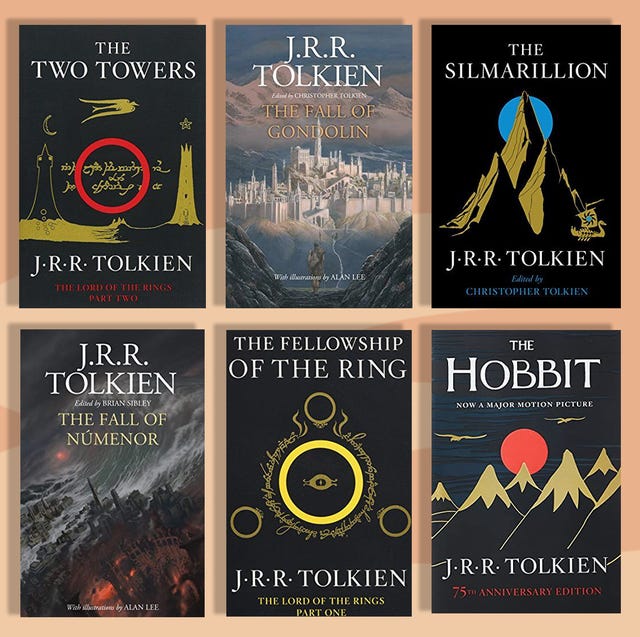

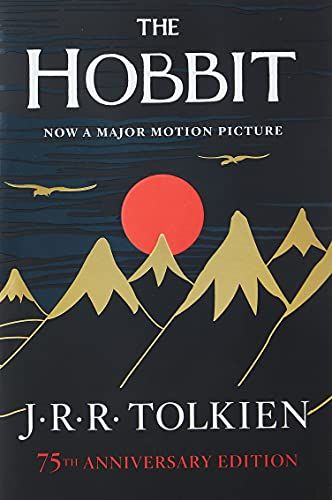

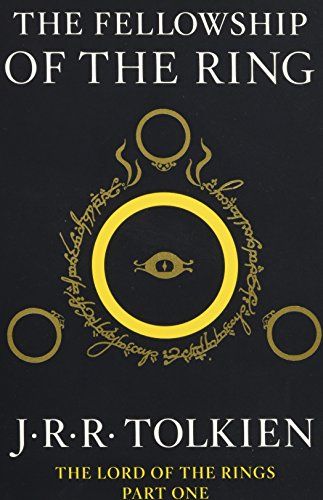
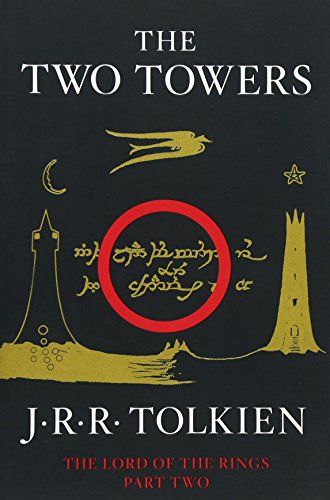
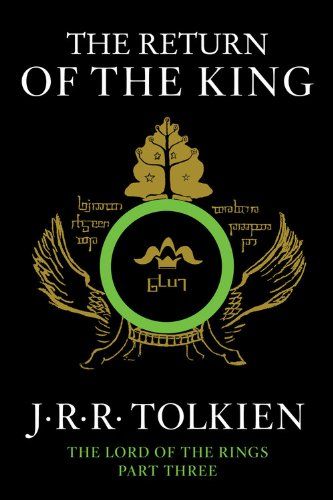
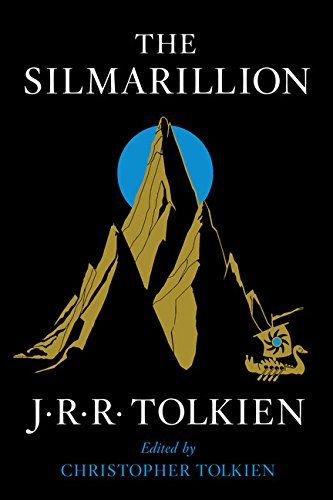

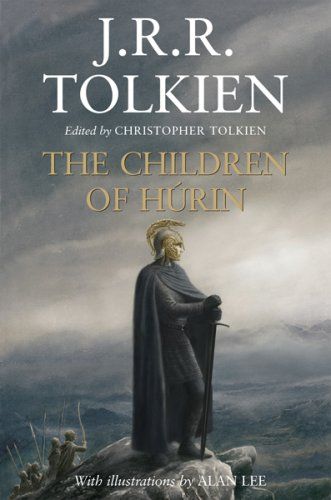
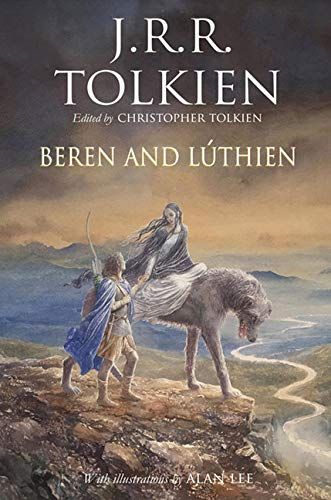
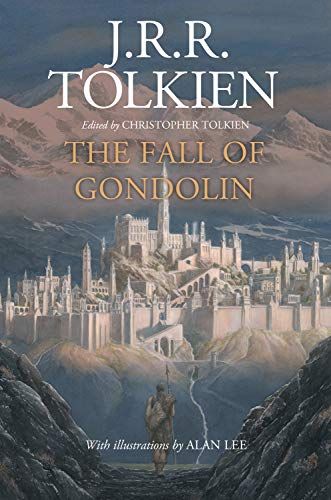

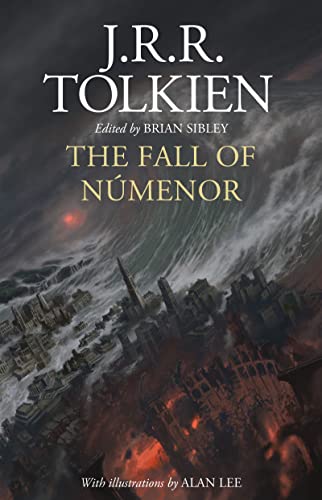
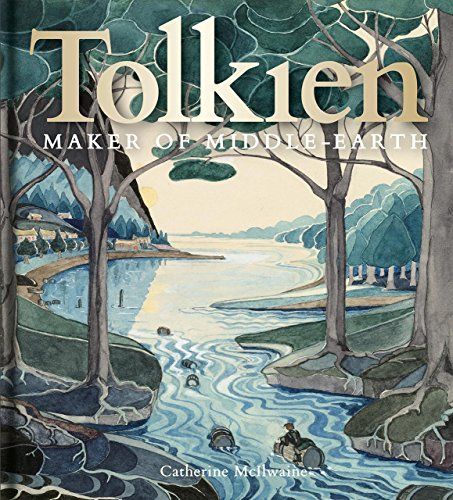
No comments:
Post a Comment